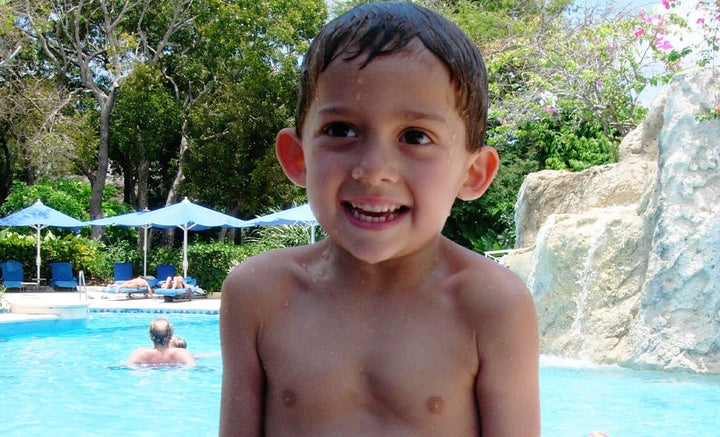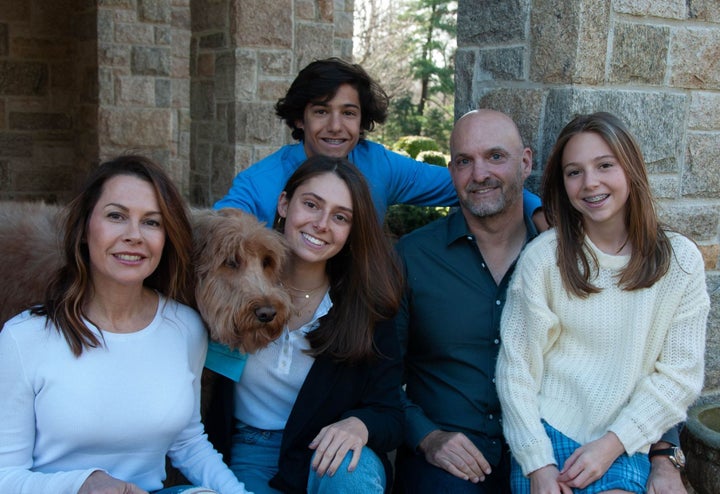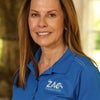
When my son Zachary drowned in our backyard pool, I never dreamed that 15 years later, in the midst of a global pandemic and a severe lifeguard shortage, that his younger brother Henry would step up to pursue a job as a lifeguard. Henry now stands among the ranks of water-safety first responders, and his new position serves as a meaningful living remembrance on what would have been Zachary’s 21st birthday.
I’m still overwhelmed with emotion when I think back to that horrible day in 2007, the day that changed our lives forever. Each traumatic detail is etched into my memory ― the chlorine scent, the reflection of the late afternoon sun on the pool, the sweaty humidity, the piercing screams. The chaos of my son’s drowning death comes rushing back in a wave of indescribably intense pain.
It was a searing July afternoon, just two months after our fourth child, Sydney, was born. We had just moved into our dream home, and the family swam and played in our brand-new backyard pool. Zachary, then 6, showed off his swimming skills (thanks to an excellent program at his summer camp). Little did we know an unexpected tragedy beyond our wildest imagination was about to unfold.
We believed we’d done everything to follow measures to keep our family safe. The pool was in full compliance with town safety codes that mandated fencing and door alarms for entrances to the pool area. Our children had taken swimming lessons; they were strong and comfortable in the water and always closely supervised.
We couldn’t know that the pool’s drain cover was defective and had become loose, removing the barrier between swimmers and the powerful vacuum pump that can exert hundreds of pounds of sucking water pressure. In an instant, the strong suction from the drain had trapped Zachary’s arm, holding him underwater. We were unable to free him until we were able to shut down the power to the pool.
In the months that followed his death, we reeled from our loss. We tried to make sense of it and wondered how we could recover as a family and give meaning to a young life cut short so unfairly. The more we learned about water safety statistics ― that drowning is the leading cause of unintentional death for children between the ages of 1 and 4 and is the second-leading cause of death for children younger than 14 ― the more we knew we wanted to prevent other families from ever having to experience the loss of a child from drowning.
With Zachary as our inspiration, we formed The ZAC Foundation a few years later. Over the last decade, the foundation has provided free swim camps for more than 20,000 kids around the country (especially in urban areas), has awarded grants for water safety education and research, and fostered partnerships to develop community-based drowning prevention plans in four large cities. Importantly, The ZAC Foundation has contributed toward the development of a national Water Safety Action Plan, designed to educate everyone (from homeowners to aquatic center personnel) about best practices to promote water safety and prevent drowning. Our entire family has been engaged from Day 1 on this journey to build the foundation. So it was no surprise that Henry said, at my suggestion, that he was “all in” to become a lifeguard.
Since the onset of the coronavirus pandemic, the American Lifeguard Association reported a whopping 40% to 50% staffing shortage at swimming areas across the country. These are well-paying jobs requiring skill and grit. I was confident that Henry ― a very strong, skilled swimmer and someone hyper-aware of the importance of water safety ― would make a highly competent lifeguard.

On the first day of his training, Henry had to dive to the bottom of the deep end, retrieve a brick and swim with it to the shallow end. Even though he was strong and played sports, he found it hard to do, and at least two of his fellow students couldn’t complete the task. When Henry came home and told us about the exercise, we couldn’t help but wonder if we had made the right decision. Would he be able to handle the physical rigor and emotional stress of this job? And could we?
Getting safety-certified wasn’t easy. Henry nearly missed his sister’s eighth-grade graduation due to lifeguard training. But he persevered, earned his certification and was hired at a pool in our community. From the get-go, he was hyper-vigilant.
On his first day at the pool, he surprised his peers and supervisor by proactively asking them to locate the safety equipment. For Henry, water safety was not an abstraction. It was urgently real. He fully understood the importance of safety training and safe pool management.
As statistics bear out, drowning incidents happen all the time ― even when lots of safety precautions have been taken. It is terribly easy (even typical) for a parent or caregiver to become distracted while watching toddlers play in the kiddie pool and, even worse, while also trying to keep an eye on their older kids in the main pool. It happens!
For lifeguards, unanticipated dangers lurk everywhere. Many pools are overcrowded, and it can be difficult to monitor children who become hidden. In larger pools, sightlines are often obscured by columns and curves. Glare on the water can mask danger. And unanticipated distractions for the lifeguard can be especially risky.
Despite warnings from well-intentioned friends in the drowning prevention movement, the pitfalls and risks (emotional and otherwise) never overwhelmed Henry. I feel deeply touched by his seriousness and courage, given the tragedy we had lived through with Zachary.
By the end of the summer, the closest Henry came to rescuing someone was when he offered to help an older gentleman navigate the pool stairs on his way out. The man gruffly rebuffed the offer, but Henry stood nearby to make sure that the man was able to safely hold his footing.
No family should ever have to endure the loss of a child. When a parent turns to me, with fear and sympathy in their eyes, they will often ask how they can learn from Zachary’s loss and prevent this from happening to them. We share easy-to-remember lifesaving tools, like the ABCDs of drowning prevention.
There should always be an Adult present with eye-to-eye contact on the child swimming. Barriers, like fences and gates, are a must for restricting children’s access to the water. Families should enroll in Classes ― swim lessons for kids and CPR training for adults. Drains should be regularly inspected for broken and/or loose covers. And proper lifesaving Devices, i.e. U.S. Coast Guard-approved life jackets, should be worn at all times in open water.
After our family’s devastating loss, I never would have imagined that my other children would take on what has become my life’s work. Maybe Henry didn’t realize what the impact would be for me when he agreed to try lifeguarding, but his decision made me deeply proud. His willingness to be vulnerable and address our family’s trauma head-on is a source of strength and hope.
During the year of Zachary’s 21 birthday, I look back and feel grateful for life’s lessons learned and the opportunity to hopefully prevent a tragic loss for others.
Karen Cohn co-founded The ZAC Foundation in 2008 with her husband, Brian Cohn, after their 6-year-old son, Zachary Archer Cohn, drowned when his arm became entrapped in a pool drain. Zachary’s memory is the inspiration for the foundation’s mission and activities. The ZAC Foundation has funded free water safety and swim camps for more than 20,000 children in at-risk communities nationwide and is spearheading the development of drowning prevention plans in four U.S. communities in the hopes of reducing the national drowning rate. Through her role at The ZAC Foundation, Karen has testified before congressional subcommittees as well as before state and federal agencies, including the Consumer Product Safety Commission and the Centers for Disease Control and Prevention. She has written about water safety issues for major media outlets and is also a Northeast Trustee of the Boys & Girls Clubs of America.
Do you have a compelling personal story you’d like to see published on HuffPost? Find out what we’re looking for here and send us a pitch.
